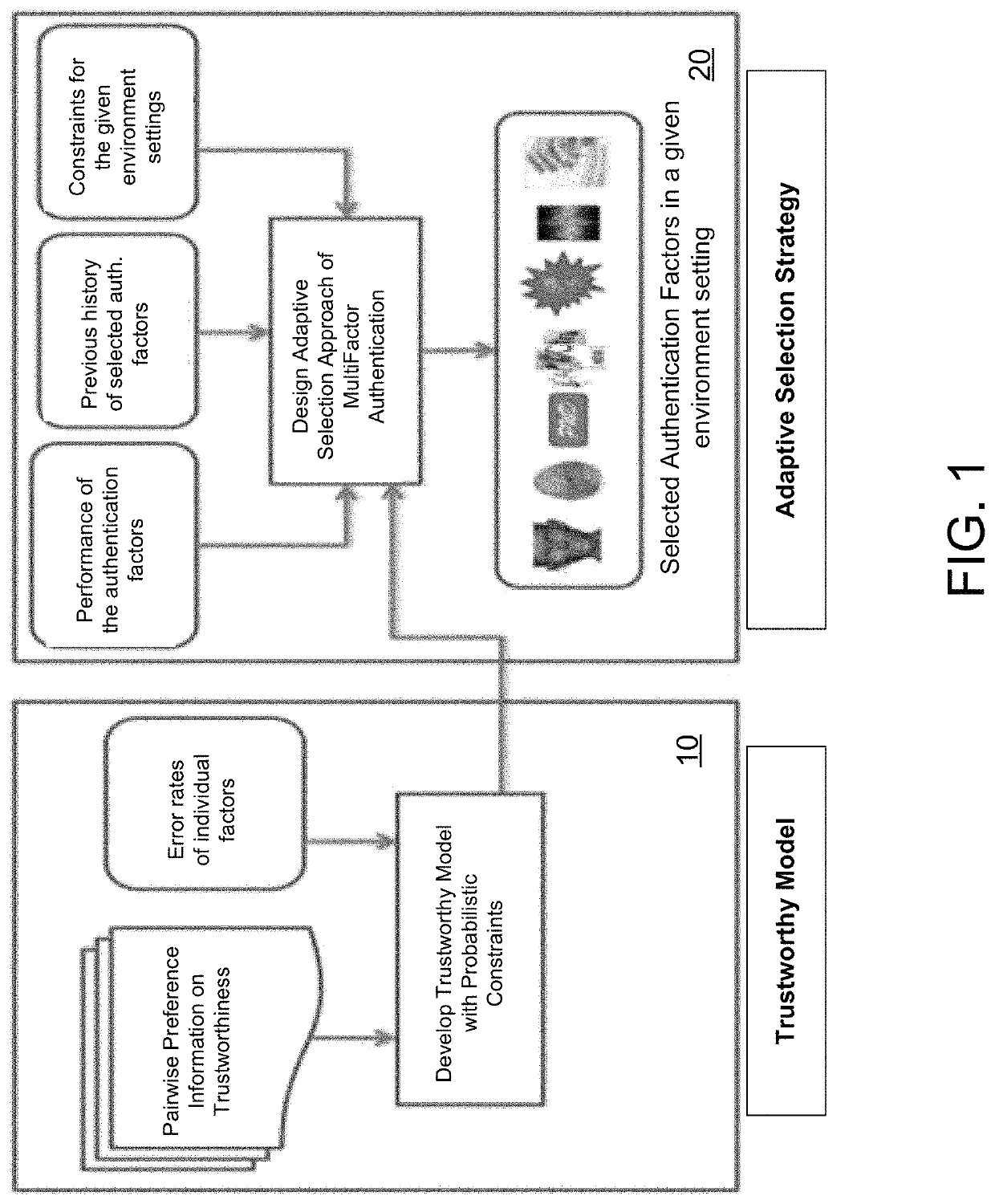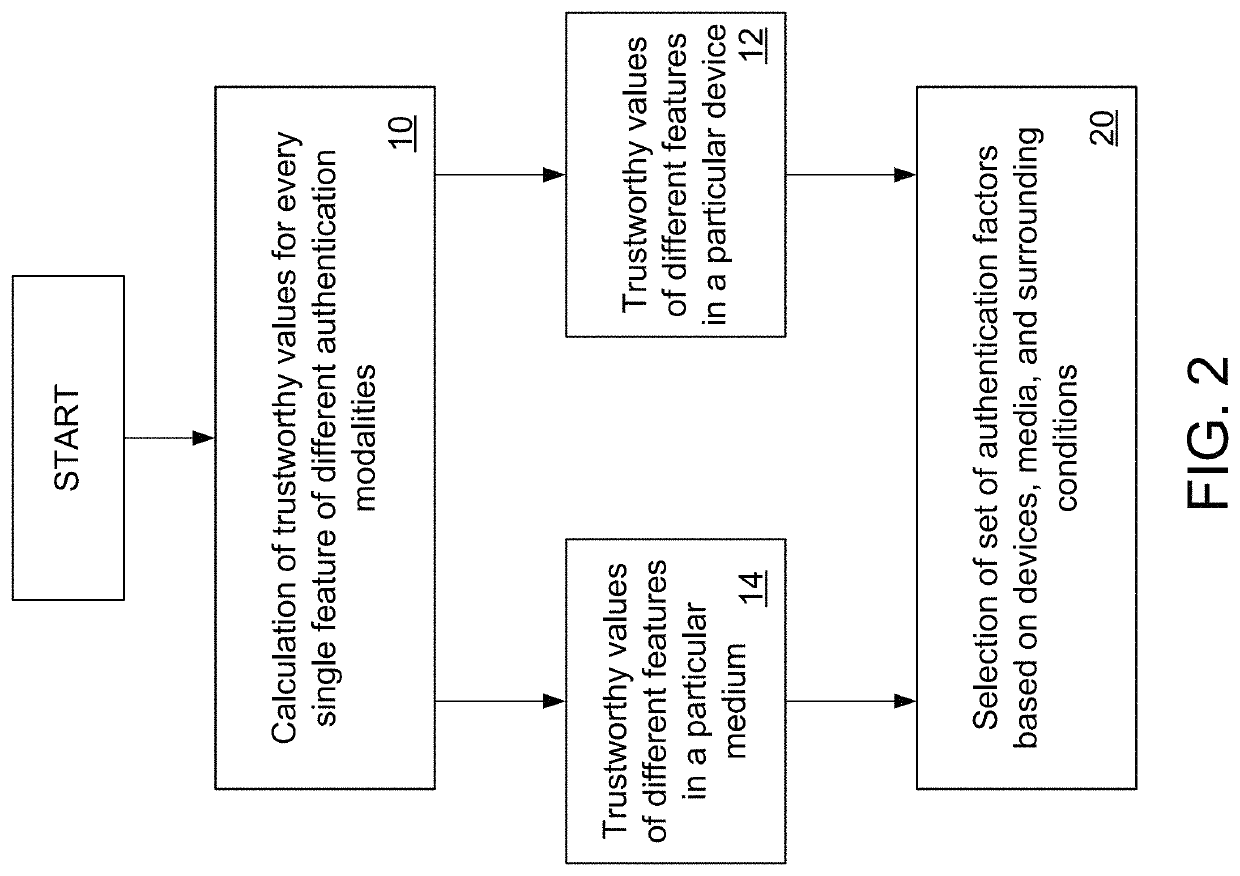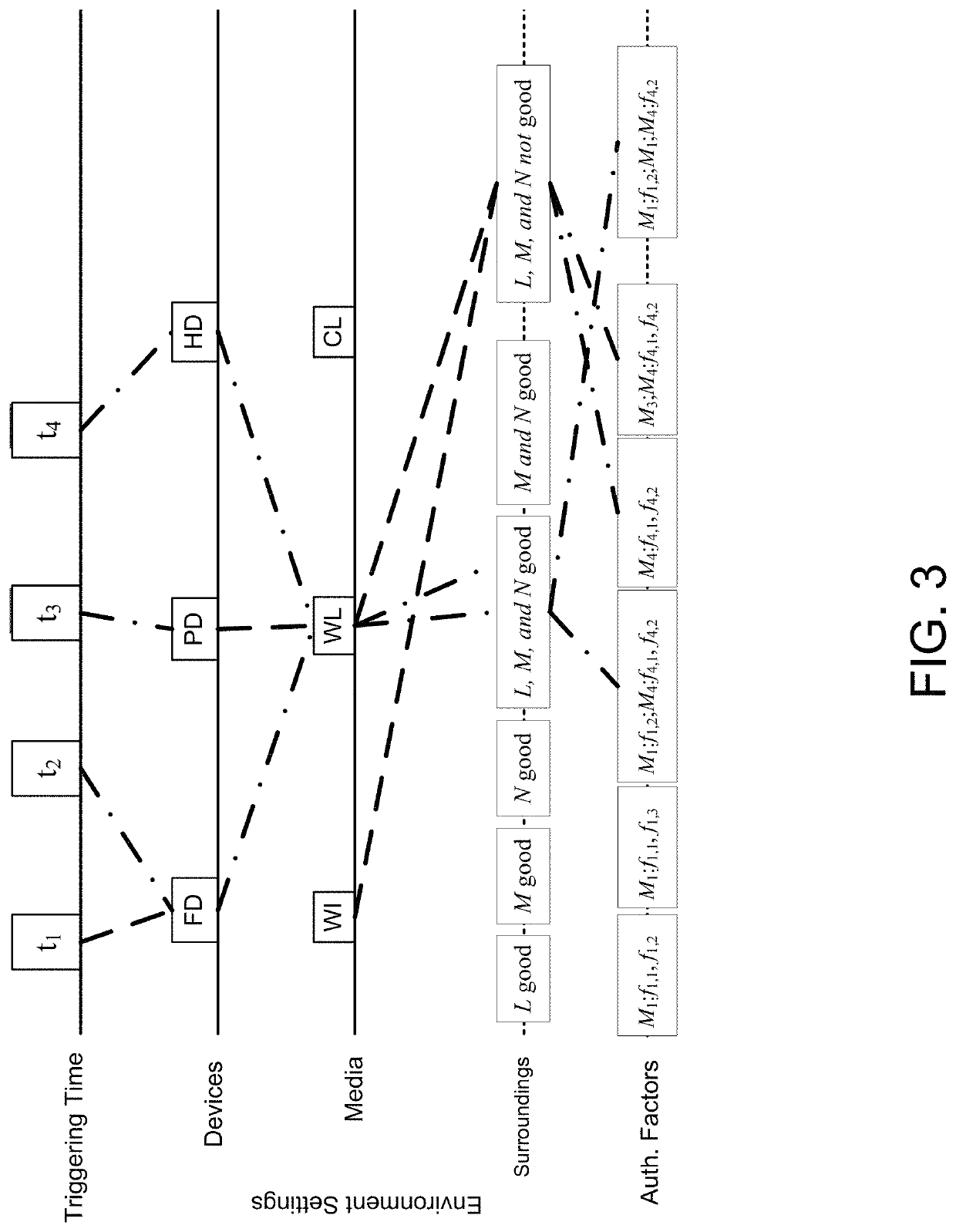Adaptive multi-factor authentication system with multi-user permission strategy to access sensitive information
a multi-factor authentication and multi-user technology, applied in the field of systems, to achieve the effect of minimizing the effect of factors
- Summary
- Abstract
- Description
- Claims
- Application Information
AI Technical Summary
Benefits of technology
Problems solved by technology
Method used
Image
Examples
Embodiment Construction
[0034]In various exemplary embodiments, the present system provides an adaptive multi-factor authentication system and related methods that improves secure access to various computing devices, network-connected devices, systems, resources, or services. It allows for the checking of the authenticity of users not only at the initial time of accessing the service, but on an intermittent or continuous basis throughout the access period or session for a particular user. The system chooses the better or best set of a variety of authentication factors out of all possible choices for the given operating environment or conditions at the time of authentication. By adaptively selecting different factors, the present invention reduces the chances of compromising user identity and sensitive or confidential information throughout the access period or session.
[0035]In one exemplary embodiment, as seen in FIGS. 1 and 2, the present invention comprises a mathematical model 10 for calculating the tru...
PUM
 Login to View More
Login to View More Abstract
Description
Claims
Application Information
 Login to View More
Login to View More - R&D
- Intellectual Property
- Life Sciences
- Materials
- Tech Scout
- Unparalleled Data Quality
- Higher Quality Content
- 60% Fewer Hallucinations
Browse by: Latest US Patents, China's latest patents, Technical Efficacy Thesaurus, Application Domain, Technology Topic, Popular Technical Reports.
© 2025 PatSnap. All rights reserved.Legal|Privacy policy|Modern Slavery Act Transparency Statement|Sitemap|About US| Contact US: help@patsnap.com



